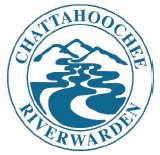Hydrilla
What is it?
- Hydrilla is an invasive aquatic plant that can grow an inch a day.
- Millions of dollars are spent each year on herbicides and mechanical harvesters in Florida alone in an effort to place hydrilla under “maintenance control”.
- Hydrilla seriously interferes with both recreational and commercial boating, and it prevents swimming and fishing.
- Dense infestations can alter water chemistry and oxygen levels.
- Hydrilla reproduces when cut, making it especially difficult to manage in areas of heavy boat traffic.
- Plants can lie dormant for several years and can never be truly eradicated.
What you can do about Hydrilla
- Reduce the amount of lawn next to the shoreline by adding native trees, shrubs, groundcover, mulch, and pine straw. This will enhance the aesthetics of the shoreline, lower maintenance time and cost, and provide a protective buffer between maintained lawn areas and the lake.
- Never put grass clippings in the lake, and minimize (or eliminate) the use of synthetic lawn fertilizers.
- Never apply any herbicides to weeds in a lake – remember our lakes are the source of drinking water for many communities. Only licensed applicators, using approved aquatic herbicides under the direction of Georgia Power, are authorized to chemically treat aquatic vegetation on GPC lakes.
- Remove any visible mud, plants, fish or animals before transporting equipment or boats. Also check propellers and live wells.
- Remove water from equipment and boats before transporting.
- Clean and dry anything that came in contact with water (boats, trailers, gear, clothing, dogs, etc.) before going to another lake or reservoir.
- Never release plants, fish or animals into a body of water unless they came out of that body of water.
Click here to view the source document.
